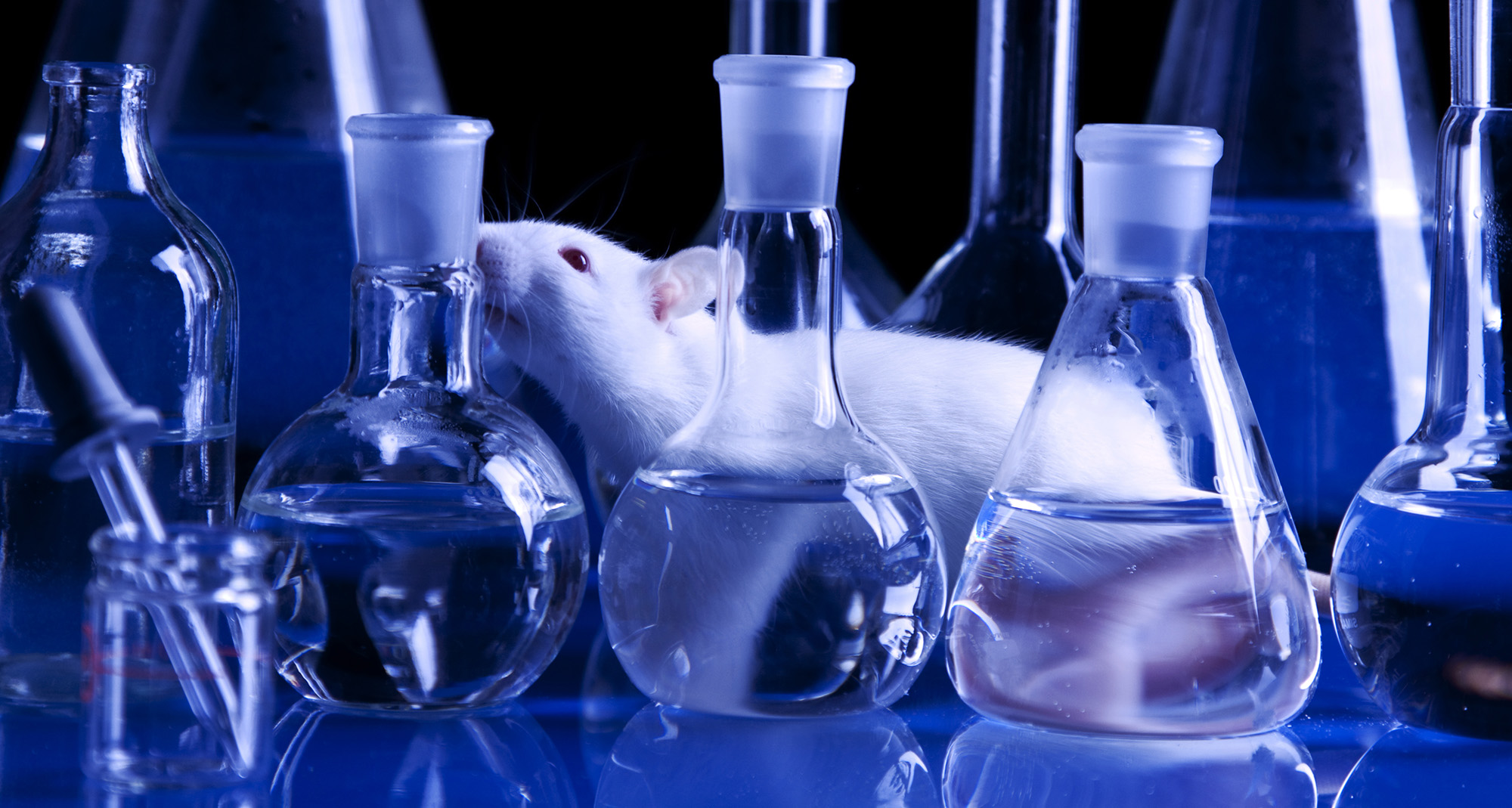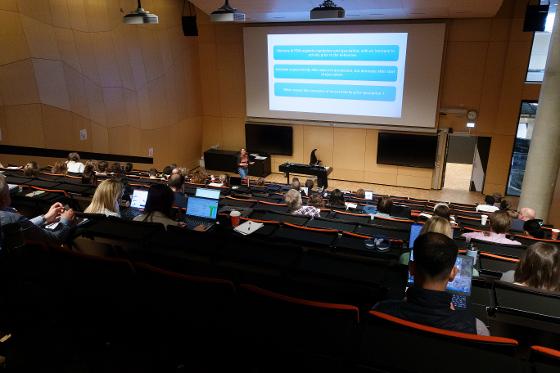
Section of Comparative Medicine (AKM) is the core facility and resource for experimental animal research conducted at the Faculty of Health Sciences.
Animal WelfareAKM supervises and regulates good animal welfare and provides ethical guidelines for the use of animals in medical research. We contribute to reproducible and reliable animal studies, while working in a safe environment. |
September 2023
AKM user meeting 4th of September
June 2023
The process of finalizing the equipment of the large animal facility has started, it is expected to be finish by the end of 2023. The plan of reopening AKM-2 is expected within 2023/early 2024.
11th of May 2023
Our first AKM-seminar was held with more than 80 participating researchers.

March-April 2023 In collaboration with Nord university in Bodø, Project Zebrafish has started to get the facility for zebrafish up and running. Competence will be recruted to assist the project.
January 2023 The dean of the health faculty has requred an action plan for AKM 1, 2 and 3. It is a strategic plan for future research- and education at AKM. The report has been delivered and approved.
January 2023 The test run of AKM 2 (in colaboration with Statsbygg) has started and the last building projects are coming to an end. With a stable 3 months test period and a full functional facility, an approval in Mattilsynet can be applied for.
December 2022 The webpage of AKM is in the remake and structual changes will be implemented for 2023. Webbased forms has been implemented for animal purchase, technical service etc.
Application to conduct research using experimental animals
Anyone who will perform experiments with animals needs permission from the Norwegian Food Safety Authorities (Mattilsynet). A prerequisite is to have completed a course in animal experimental science and then you will have to apply for each planned animal experiment. There are two types of animal experiments.
- In vivo (experiments on live animals)
- In vitro (laboratory experiments using animal tissues/cells collected postmortem)
How to apply for In vivo projects:
The application should be sent electronically in the system FOTS. Find more information of how to register as a user in FOTS under the menu access, you can apply to register in FOTS using this form: FOTS registration.
Applications should be submitted well in advance before the scheduled start of the experiment.
How to apply for in vitro-projects
All In vitro-projects is locally approved by the Designated Veterinarian /person with special screening responsibility (PMSK). All researchers at UiT will have to write a detailed application using this form, you can also find it in the top menu User-forms.
For more information see Norwegian Food Safety Authority (Mattilsynet). The webpage is only available in norwegian.
Three different experimental animal courses are available at UiT
- CAREiN Experimental animal course in laboratory animals ((8 ECTS)
- HEL-6320 for Fieldwork/wildlife (terrestrial and marine wild mammals and birds) (6 ECTS)
- BIO-3503 for aquatic animals (fish and decapods) (5 ECTS)
From the beginning of 2023 a national corporation has been established between the universities in Oslo, Bergen, Trondheim and Tromsø regarding the CAREiN course in laboratory animals. Therefor registration to the theoretical part of the course is done via Bergen University (UiB) and the first part is strictly an online curse. Practical skills are then taught at UiT (in department for comparative medicine) for students registered at UiT.
For more information see here: courses
The novel AKM building is equipped with up-to-date zebrafish facilities.
Zebrafish is a well-known model system for early vertebrate embryo development, and its overall sequence similarity with humans and conserved catalytic sites and functions for proteins involved in e.g drug metabolism, signaling pathways and transcriptional regulation, makes it suitable as a model in the medical field, to study human diseases as well in animal physiology and aquatic toxicology. There are several advantages using zebrafish as a model system: it is a small and robust fish, the generation time is short, the number of offsprings are high per mating, and fertilization is external so live embryos are accessible to manipulation and can be monitored through all developmental stages. In addition, advanced molecular techniques can be used to manipulate the genome and make transgenic fish or isogenic (clonal) lines. Advanced methods and equipment make it possible to perform various molecular analyses as well as studying e.g behavior, and last but not least the space and costs required compared to other model systems are small. Several zebrafish models for human diseases exists, and especially interesting for research at the Faculty of Health Sciences could be mentioned zf models for cardiovascular disease, autophagy, metabolism, cancer, neuroscience, drug screening and drug development. For research done at the Faculty of Biosciences, Fisheries and Economics it is relevant to mention that zebrafish provides a range of well-developed molecular genetic techniques which are not available for other ecologically and commercially relevant fish species by facilitating some in-depth analyses using a powerful and versatile fish model. This could allow studying different genetic, immunological and physiological processes like genetic mapping and identification of quantitative trait loci, and testing of bioactive compounds with therapeutic potential. Within aquatic toxicology, the model is used among others to determine the mechanisms of toxicity of contaminants, generate toxicity data for regulatory ecotoxicology based on standardized tests and allows to study epigenetic inheritance through multi- and trans-generational experiments.
In Norway zebrafish research is conducted at the Zebrafish core facility at NCMM in Oslo, the Norwegian Zebrafish Platform at NMBU in Ås, the Zebrafish facility at the University of Bergen, the Kavli Institute for Systems Neuroscience at NTNU and at the Nord University in Bodø.
For pictures of our facility at UiT see here.
New facilities have been built at the Section of comparative medicine (AKM) where it is possible to conduct projects and research based on infectious disease models. The unit has professional laboratories and housing facilities for rodents (mice, rats) both wildtype and transgenic and are classified biosafety level 2.
Biosafety level 2 (BSL-2) covers all laboratories working with agents associated with human disease that poses a moderate health hazard. Examples of research conducted at AKM are work with human and mouse cytomegalovirus and the unit have potential for supporting many more future projects.
Additionally, the unit can be used as a quarantine station when receiving animals from non-commercial suppliers as these animals are not considered specific pathogen free animals (SPF).
For pictures of our facility see here.
Norwegian Animal Research Authority

Links to 3R resources
National Centre for the Replacement, Refinement and Reduction of Animals in Research (NC3Rs)
Links to other laboratory animal facilities in Norway
Norwegian Institute of Public Health
Section of experimental biomedicine, The Norwegian School of Veterinary Science
University of Bergen - Laboratory Animal Facility
Links to relevant legislation:
Norwegian Regulation on Animal Experimentation - 1996
EUs legislation regarding animals used for scientific purposes
Links to laboratorial animal science associations:
What should I do if I am bitten by a mouse or rat while working with laboratory animals?
This applies to all employees in a laboratory animal business and everyone else who works with animals for use in research.
Animal bites from mice and rats can cause local infections where the penetrating injury has occurred. In rarer cases, there may be blood accumulations and damage to the underlying tissue. In particular, people with a weakened immune system may be exposed to a local infection from a bite, developing into a general infection. Rabies can also be transmitted by bites from rodents, but is not considered a zoonosis risk in pure laboratory animals. In contrast, everyone who works with laboratory animals is recommended to be vaccinated against tetanus (tetanus, Clostridium tetani) every 5 years. See also UiT's central guideline for vaccination here.
In the case of bite injuries, you should
1) Clean the wound thoroughly: rinse with plenty of water and wash with e.g. chlorhexidine 1mg/ml or other wound disinfection.
2) Contact the emergency room to evaluate any deeper injuries and how to deal with them. If you have not had a tetanus vaccination, you will get a vaccine from either your GP or the emergency room. In Norway, this will typically be Boostrix Polio (combination vaccine against diphtheria, tetanus, whooping cough and poliomyelitis).
The doctor assesses the need for antibiotic prophylaxis and thus also records the injury, in case a question arises about occupational injury compensation later.
NB - it is the employee's own responsibility to comply with vaccination requirements when working with laboratory animals.
3) Monitor the wound/damage for 1-2 weeks afterwards. Infections in wounds can occur up to a week after the injury has occurred. In the event of signs of infection such as redness, pain and/or swelling around the wound or reduced general condition and fever, you should contact a doctor.
4) Report it as an HSE deviation if the work-related episode could have led to injury or reduced health or damage to people, the environment or material (near miss), or where damage has directly led to reduced health, permanent injury or death (personal injury/ accident), material damage or damage to the environment. See guidelines for handling HSE deviations here.
In the case of personal injury, the head of department/section manager must complete an internal notification of personal injury (Word file), and file it in the personnel folder of the person concerned.
Contact information
Page editor: Andersen, Amalie Hofmeyer